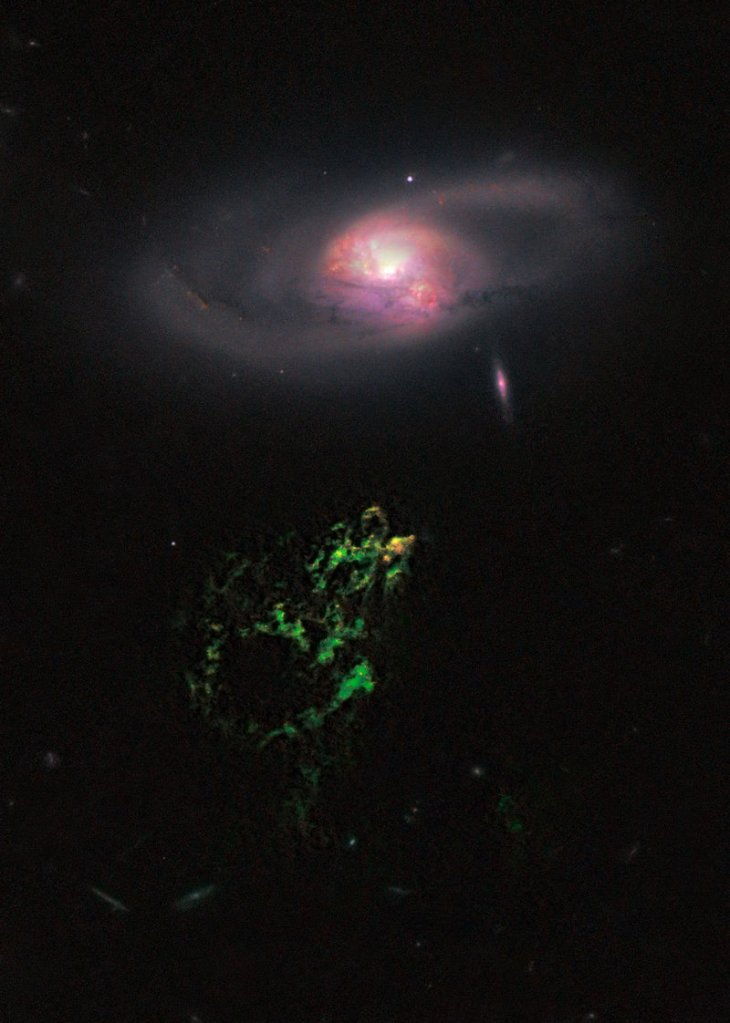WASHINGTON — The Hubble Space Telescope got its first peek at a mysterious giant green blob in outer space and found that it’s strangely alive.
The bizarre glowing blob is giving birth to new stars, some only a couple of million years old, in remote areas of the universe where stars don’t normally form.
The blob of gas was first discovered by a Dutch schoolteacher in 2007 and is named Hanny’s Voorwerp. “Voorwerp” is Dutch for “object.”
NASA released the new Hubble photo Monday at the American Astronomical Society meeting in Seattle.
Parts of the green blob are collapsing and the resulting pressure from that is creating the stars. The stellar nurseries are outside of a normal galaxy, which is usually where stars live.
The blob is the size of our own Milky Way galaxy and is 650 million light years away. It is mostly hydrogen gas swirling from a close encounter of two galaxies and it glows because it is illuminated by a quasar in one of the galaxies. A quasar is a bright object full of energy powered by a black hole.
The blob was discovered by elementary school teacher Hanny van Arkel, who was 24 at the time, as part of a worldwide Galaxy Zoo project where everyday people can look at archived star photographs to catalog new objects.
Van Arkel said when she first saw the odd object in 2007, it appeared blue and smaller. The Hubble photo provides a clear picture and better explanation for what is happening around the blob.
“It actually looked like a blue smudge,” van Arkel said. “Now it looks like a dancing frog in the sky because it’s green.” She says she can even see what passes for arms and eyes.
Send questions/comments to the editors.



Success. Please wait for the page to reload. If the page does not reload within 5 seconds, please refresh the page.
Enter your email and password to access comments.
Hi, to comment on stories you must . This profile is in addition to your subscription and website login.
Already have a commenting profile? .
Invalid username/password.
Please check your email to confirm and complete your registration.
Only subscribers are eligible to post comments. Please subscribe or login first for digital access. Here’s why.
Use the form below to reset your password. When you've submitted your account email, we will send an email with a reset code.